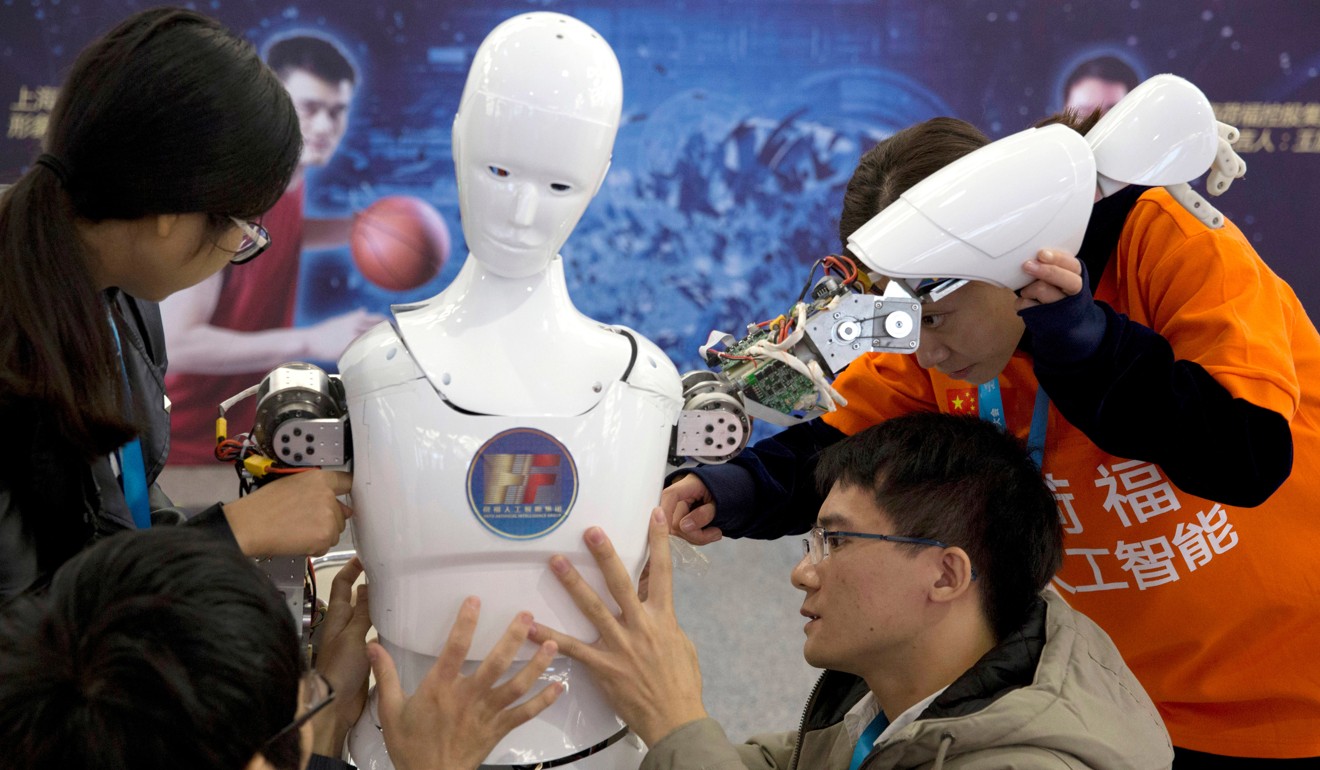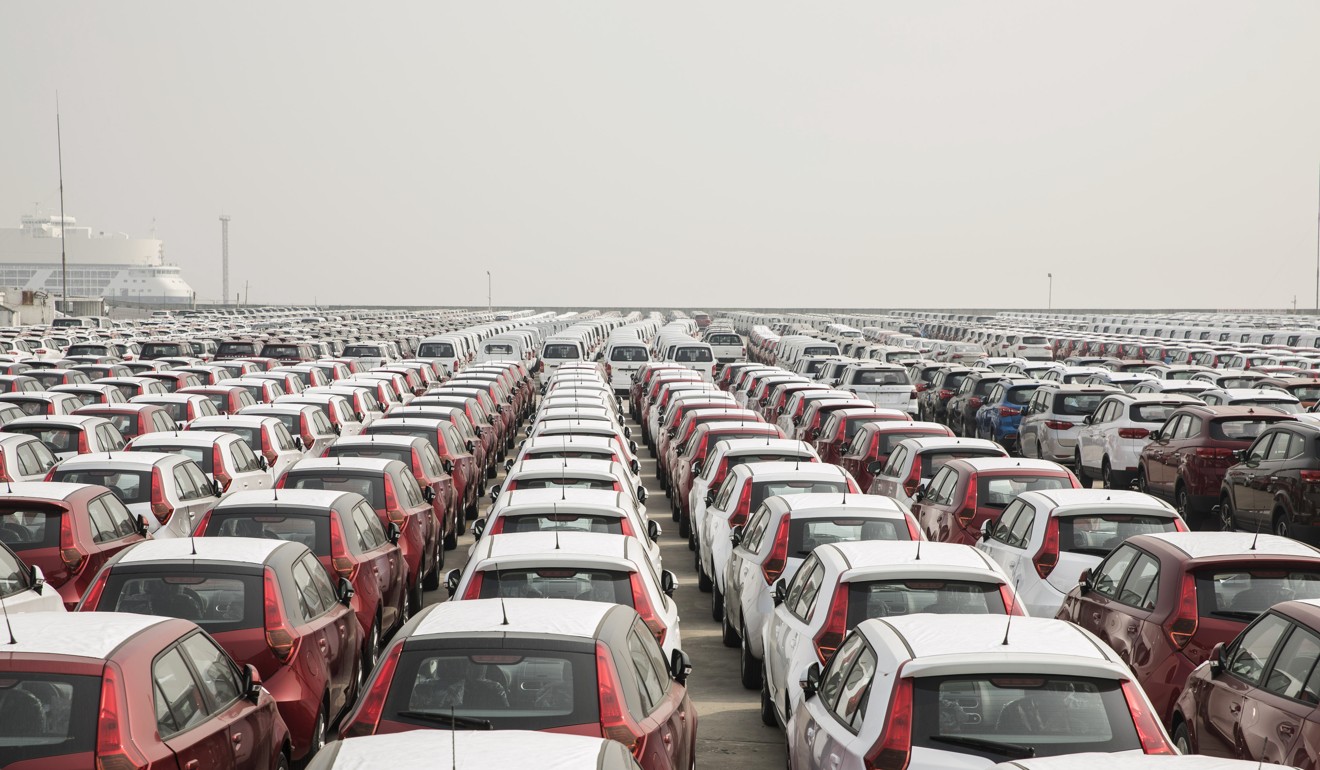
Why Chinese Vice-Premier Liu He has the most difficult job in the US-China trade talks
Liu He, a key adviser to President Xi Jinping, is facing pressure to reach ‘some kind of agreement’ with Washington, but cannot be seen to sacrifice too much
When China’s vice-premier, Liu He, set off for Washington on Tuesday to resume talks to avert a much-dreaded trade war, he was facing a difficult challenge.
Although President Xi Jinping pulls the strings, Liu – Xi’s top economic aide and the point man for the trade talks – is the obvious target to blame if negotiations go badly and tensions escalate sufficiently to damage the economy or even leave China in technological isolation.
Few people expect the talks to go smoothly. As Arthur Kroeber, research head at Gavekal Dragonomics in Hong Kong put it in a recent note, the rivalry between the US and China was not principally about trade, but was really about China’s emergence over the last five years “as a formidable bidder for economic and political influence, an aspirant to technological leadership, and a major global investor”.

Sources said the pressure was on Liu, the 66-year-old Harvard-trained technocrat, to achieve “some kind of agreement” ahead of a planned trip by vice-president Wang Qishan to Washington in early July.
“Liu faces a dilemma,” Hu Xingdou, an independent political economist said.
“If an agreement is reached in which China makes big concessions on trade or its race to become a technological superpower, Liu will probably also be blamed for the impact on China’s economy and loss of future technological prowess.”
The Chinese authorities, many of whom initially saw a trade war as unlikely, are “increasingly concerned and anxious” about the prospect and the long-term rivalry between China and Western countries, according to the sources in government think-tanks.
“The failure to reach any agreement with the US delegation rang alarm bells for many Chinese officials who used to be blindly optimistic,” a source said.
Liu’s trip to Washington will be his second to America in three months and follows the recent visit to Beijing by a US delegation led by Treasury Secretary Steven Mnuchin, which ended without tangible achievements.
“Now Chinese officials are beginning to worry about China’s economic resilience and potentially weak domestic demand, thus adding to the pressure on Liu, the helmsman of China’s economy,” the source said.
On March 22, US President Donald Trump signed a memo to impose a 25 per cent punitive tariff on up to US$60 billion of imports from China, which will be finalised later this month.
Liu He must build China’s high-tech sector, even as US trade war looms
Given the amount is only 2.5 per cent of China’s annual exports, many economists believe the direct impact would be small.
In response, China threatened to impose tariffs on an equal amount of US exports, including agricultural products from Trump’s political heartland.
Taken aback by the rapid retaliation, Trump then threatened further tariffs on another US$100 billion worth of shipments from China.
Economists have said the immediate impact of a trade war would be limited in the short term, but the longer the uncertainty continues the greater the potential impact on the Chinese economy.

“I don’t expect all core differences in the US-China trade relationship to be resolved,” said UBS chief China economist Wang Tao.
“Lingering trade tension and uncertainty will likely negatively affect China’s export orders and related business investment.”
Wang noted that China’s senior leadership had already hinted at changing lending restrictions to support domestic demand and growth should there be an export slowdown.
“In the case of a notable export slowdown, the current credit-tightening policies, especially those related to infrastructure investment, may be relaxed or reversed,” she said.
Under Liu’s watch, China has been tightening credit in the past few years to contain financial risk, after debts swelled to alarming levels in local governments and state-owned enterprises.
If the monetary policy is reversed, it would be a setback to Liu’s economic policies, which focus on deleveraging and have profound implications for social stability in the long term.
Brock Silvers, managing director of Kaiyuan Capital, a Shanghai-based investment advisory firm, said: “The real aim [of China’s deleveraging campaign] is the reduction of risk to the state via tighter control over access to capital.”
“The government’s primary goal remains social stability, and should trade tensions spark an economic downturn, look for Liu He and the central bank to take any necessary short-term measures to quell threats to that stability,” Silvers said.
US, China still 'very far apart' on trade, ambassador Branstad says
While the US aims are clear – narrowing the trade deficit with China, improving market access for its companies and addressing China’s challenge to American technical, military, economic and political dominance – it is uncertain what Beijing can do to satisfy them.
Many economists believe reducing the US-China bilateral deficit by US$200 billion in the space of two years, Trump’s stated aim is unrealistic.
It is also uncertain how willing China would be to make substantial concessions in technology, for example by abandoning its Made in China 2025 plan to boost its domestic hi-tech sector, beyond promising no forced technology transfers, better protection for intellectual property and wider market access.
“China is poised to announce more market opening measures, following moves in the finance and automobile sectors,” Gary Liu Shengjun, the head of the China Financial Reform Institute in Shanghai said.

“However, when Liu [He] and his peers unveil the opening up measures, they have to be very cautious not to provoke nationalist sentiment, which has been on the rise after the ZTE incident.”
Last month the US slapped a seven-year components ban on the Chinese telecoms firm for shipping technology to Iran, forcing it to suspend its main operations.
Although Trump hinted that he would reconsider the matter on Sunday, the ban has triggered an upsurge in nationalist sentiment in China and prompted calls to boost domestic self-reliance.
The Chinese authorities have also been trying to fend off the impression that they bowed to pressure from Western countries to improve market access.
Last November, China waited until Trump had left Beijing following his first official visit to the country to announce that it would open up its financial sector – a move designed to stress it was making reforms on its own terms.
“The most difficult part of Liu’s job is to make the US believe what China claims: that China does not seek to supplant the existing global economic order.
“Developing technology is necessary for China to make the move from a middle-income to a high-income economy; and China is sticking to market economy.”
“Given the starkly different political and cultural background, it would be extremely difficult to make the persuasion,” he said.

